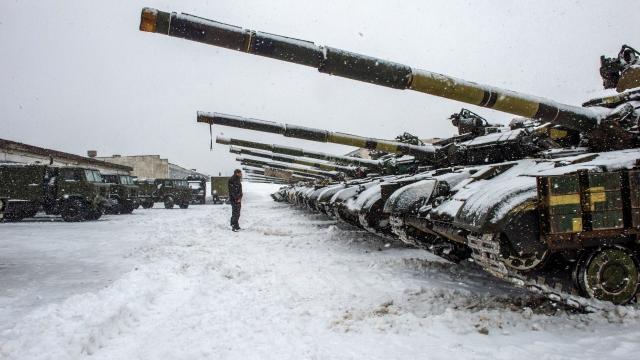Semiconductor chips, the seemingly unremarkable component responsible for derailing global supply chains over the past two years, may play a pivotal role in the international community’s efforts to curtail Russia’s invasion of Ukraine. Whether those tactics will actually work as intended remains far from certain.
Semiconductors have become the equivalent of 21st-century nuts and bolts, underpinning everything from smartphones to Ford F-150s. Though Russia and Ukraine aren’t known for producing semiconductors, they are both critical sources of neon gas and palladium used to produce those coveted chips. As CNBC notes, the U.S.’s neon supply comes almost entirely from those two countries, a major dependency that has some experts worried about looming supply shocks that threaten to derail global supply chains just as shortages appeared to be coming under control.
For some context: neon prices saw an astounding 600% price increase during Russia’s last conflict with Ukraine, in 2014. Making matters worse, Russia, Reuters notes, supplies the U.S. with about 35% of its palladium, a mineral integral to sensors and other applications relied on by the tech industry.
“This will have an impact,” Techcet President and CEO Lita Shon-Roy told CNBC. “It will continue to constrain the chip source.”
Experts and members of the chip industry told Reuters that supply shocks caused by Russia’s invasion may take time to manifest, in part because many chip makers have spent the past two years diversifying their supply chains to deal with the last shortage. But while chipmakers and suppliers expressed optimism around their ability to withstand disruption earlier this week, few truly predicted the force and scale of Russia’s invasion.
Worries around chips may just be getting started as the U.S. and others appear poised to the use components as a means of economic pressure on the Russian government.
Late Thursday afternoon, the Biden administration responded to the attack on Ukraine by announcing it was issuing new sanctions directed at the Russian government. Those included new export controls from the Commerce Department reportedly subjecting semiconductors, computers, telecommunications, information security equipment, lasers, and sensors to restrictions preventing them from being used by Russia.
In a press conference, President Joe Biden said the new measures would “impose severe cost on the Russian economy, both immediately and over time.”
Though exact details around those sanctions remain unclear, the Biden administration has been considering some variations of semiconductor restrictions for some time. Earlier this month, the administration threatened to cut off Russia from its semiconductor supply if the county were to invade Ukraine. That’s significant because while the U.S. may rely on Russia for access to materials, Russia conversely relies heavily on the U.S. for the actual chips and chip designs.
The administration warned it could potentially not only restrict Russia’s access to American-made chips but also chips from other foreign countries as well, a restriction that could have a devastating impact on the Russian economy.
“If Russia wants to develop these [technology] sectors, it needs to import technologies and products that only we and our allies and partners produce,” a White House official told Axios “And so that would lead to an atrophying of Russia’s productive capacity over time.”
That plan isn’t foolproof though. Semiconductor restrictions won’t stop Russia’s helicopters and tanks from engulfing Ukraine in the near term, and some experts worry such a manoeuvre may actually backfire on the U.S. and others down the road. In an interview with Politico, Paul Triolo, the technology policy lead at consulting firm Albright Stonebridge Group, said a U.S. policy closing off access to chips to an entire country was “unprecedented” and could lead other foreign chip manufacturers to reconsider incorporating U.S. technologies in their products.
“At a minimum it adds to industry concerns around the unintended consequences of the U.S. government weaponizing U.S. technology dominance in the semiconductor sector,” Triolo said. Such a move could also potentially open the U.S. and other countries up to retaliatory cyberattacks from Russia, Triolo said.
It’s also far from clear whether a U.S.-led effort to cut off Russia from semiconductors would work as elegantly as the Biden administration believes.
As others have pointed out, semiconductor manufacturing represents one of the great complexities of the modern interconnected economy with elements of one product often travelling through numerous counties and even continents before arriving at a destination in its final form. Even if the administration does manage to work out those complexities, it’s possible Russia would simply turn instead to more friendly China, which by some estimates already accounts for around 70% of Russia’s computer and smartphone imports.
None of this means there’s nothing to be done, but it does point to the brain-bursting headaches of trying to levy economic sanctions using pieces of technology that are, by design, reliant on international trade
